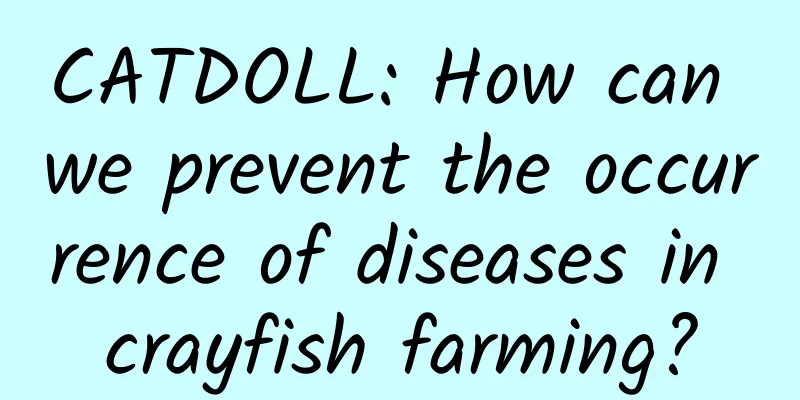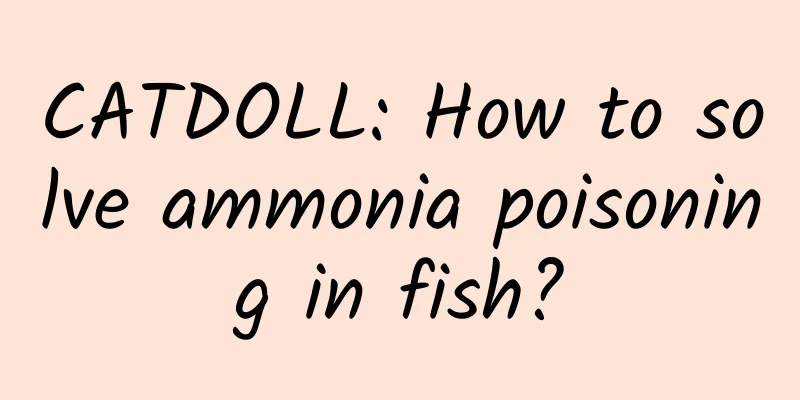CATDOLL : CATDOLL: How can we prevent the occurrence of diseases in crayfish farming?

|
In May every year, crayfish farming will enter the peak period of disease. Once the disease occurs, it is very difficult to control. Therefore, whether the prevention of crayfish farming diseases can be done well is the key to the success of farming. At the same time, only by doing a good job of prevention, even if the crayfish are sick, treatment will achieve better results. The following are some points to pay attention to in preventing crayfish diseases: 1. Hypoxia A major cause of lobster disease at this stage is lack of oxygen, so it is recommended to use more strong oxidizing bottom modification when the weather is bad or there are sudden changes. 2. Nutritional issues It is the main reason for poor physical fitness and the inability of lobsters to molt and die. It is recommended that lobster feed should be balanced in the early stage to focus on the nutrients for molting, because the number and frequency of lobster molting is much higher than that of river crabs, so regular calcium supplementation is required, and active calcium and vitamin oral drugs should be regularly sprayed to promote molting. 3. Environmental Issues The main influencing factors causing lobster disease. 1. Water stability is the key to preventing the disease. Lobster ponds have a lot of aquatic plants, and the pH value fluctuates greatly between morning and evening. The incidence of bubble disease is high, and it is easy to be infected by bacteria in the later stage. 2. Long-term high pH values and poor diet lead to poor physical condition of lobsters, which is also a factor affecting the later onset of the disease. 3. There are many rainy days, the bottom of the pond is prone to lack of oxygen, and pathogenic bacteria reproduce quickly, so it is recommended to use ecological disinfectants regularly. 4. Reasonably control density, reduce risks and reduce incidence. 4. Extreme Climate Prevention During the process of crayfish farming, high temperature seasons and rainy weather will have a great impact on the breeding pond environment. For example, in high temperature seasons, it is necessary to reasonably control aquatic plants and increase the water level of the breeding pond to avoid water pollution caused by the death of aquatic plants and the outbreak of bacterial diseases. In rainy weather, it is more likely that fungi in the pond will die, causing the pond environment to be disordered. Therefore, it is necessary to strengthen pond patrols in rainy weather and deal with emergencies in a timely manner. 5. Strengthen daily pond patrols; Daily inspections of crayfish ponds must be carried out consistently. If crayfish die in the pond, the first thing to do is to salvage and bury the dead crayfish to prevent healthy crayfish from eating and infecting each other. Ponds with problems should be isolated as necessary, disinfection should be strengthened, and different treatment plans should be made for different diseases. Factors that may cause crayfish diseases must be curbed in the bud. 1. Thorough disinfection of shrimp ponds. During the stocking of crayfish, the farmers did not disinfect the shrimp ponds carefully and thoroughly, resulting in a large amount of humus in the pond water, which can directly affect the water quality and reduce the water quality, thus providing space for the growth and reproduction of pathogens. 2. Keep the water temperature constant. Sudden changes in water temperature will cause freshwater crayfish to have a stress response, resulting in a significant reduction in their body's resistance to pathogens and being invaded by pathogens. Prevention is the priority, and prevention is more important than cure. The reason is that lobsters are transmitted through oral transmission, so once lobsters become sick, they are very difficult to treat. Prevention should focus on the basics: manage the grass well, frequently change the bottom, adjust the water well, take more calcium supplements, feed well, and maintain regular health care. The three elements for disease prevention are balanced nutrition, suitable environment, and no pathogens. Once white spot disease occurs, the crayfish's activity will decrease, fluid will accumulate in the body, the skull shell will be easily peeled off, and white spots will appear on the surface of the shell. Most crayfish carry the white spot virus. Once the breeding density is too high and the environment deteriorates, this disease will occur. The gills of crayfish with black gill disease are easily infected by bacteria, turning black, causing gill atrophy and partial rot, and then death from difficulty breathing. It will also cause the shrimp to lack vitamins for a long time, weaken its physique, and cause the gill filaments to turn black, leading to the death of a large number of crayfish. |
<<: CATDOLL: How long is the growth cycle of sea cucumbers?
Recommend
CATDOLL: What does Chilean salmon taste like? What is the breeding cycle of Chilean salmon?
1. What does Chilean salmon taste like? The taste...
Can cats eat shrimp?
Cats can eat cooked shrimps, but not raw shrimps,...
CATDOLL: Which of locusts, aphids, frogs, mantises, seven-spotted moths, red spiders, dragonflies, and geckos are beneficial insects and which are pests? How are they classified?
1. Among locusts, aphids, frogs, mantises, seven-...
CATDOLL: My dog is losing hair and becoming bald. What disease has it contracted? How can it be treated?
My dog is losing his hair and becoming bald. Wh...
CATDOLL: Treatment and prevention measures for E. coli disease in pigs
Introduction to Escherichia coli disease in pigs ...
CATDOLL: Common symptoms and treatment plans for pig diseases
Common symptoms of pig diseases: Pigs are a commo...
CATDOLL: My mealworms are in the adult stage. In the bottom flour drink, dense transparent tiny reptiles grow. The size is much smaller than the feces of the adults. What should I do?
1. My mealworms are in the adult stage. In the bo...
CATDOLL: What is the best way to raise red worms?
1. What is the easiest way to raise red worms? Th...
CATDOLL: A bee stung my neck, and my mouth and nose became dry, my eyes blurred, and I felt weak all over. After a while, the symptoms gradually improved and disappeared. Then, red bumps appeared all over my body, and it was very itchy.
Problem Analysis: Hello! The situation you descri...
What are the signs of internal organ damage in cats?
Signs of internal organ damage in cats: 1. If it ...
CATDOLL: What is the new technology of raising silkworms with Artemisia selengensis (pictures of raising silkworms with Artemisia selengensis)
1. In what kind of environment do silkworms gener...
CATDOLL: Is the red on the shrimp's back the intestine?
I found it after cooking. Was yours cut in half? ...
CATDOLL: Is it profitable to raise snails? How many do you need to raise if you want to make a million dollars a year? How much space do you need?
1. Is it profitable to raise snails? How many do ...
CATDOLL: Are grass carp and black carp the same? What is the difference?
1. Are grass carp and black carp the same? What a...
CATDOLL: How long can a normal snail live? (How long can a normal snail live?)
1. How many years can a snail live? The life span...









